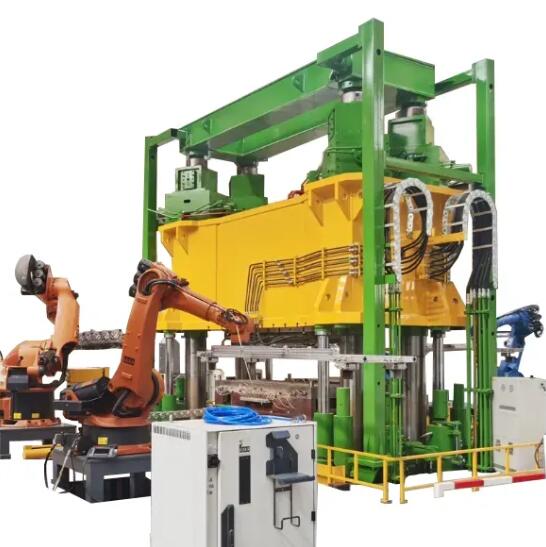Enhancing Efficiency and Precision: The Role of Hydraulic Presses in New Generation SMC Forming
2024-06-25
In the evolving landscape of manufacturing, Sheet Molding Compound (SMC) forming stands out as a versatile and efficient method for producing high-quality composite components. Central to this process is the hydraulic press, a technology that has seen significant advancements in recent years. This blog explores how modern hydraulic presses enhance the efficiency and precision of SMC molding, driving the industry towards greater productivity and higher quality outputs.
Understanding SMC Forming
SMC is a ready-to-mold composite material used in high-strength, lightweight parts for various industries, including automotive, aerospace, and construction. It consists of a mixture of polymer resin, fillers, fibers, and additives, which are molded under heat and pressure to create durable and intricate components. The hydraulic press plays a crucial role in applying the necessary force and heat to mold these materials into their final form.
Advancements in Hydraulic Press Technology
1. Increased Precision with Advanced Control Systems
Modern hydraulic presses are equipped with sophisticated control systems that allow for precise regulation of pressure, temperature, and timing. This precision ensures that each molding cycle produces components with consistent quality and dimensional accuracy. Advanced sensors and feedback loops monitor and adjust the parameters in real-time, reducing the risk of defects and improving the overall quality of the molded parts.
2. Enhanced Efficiency through Automation
Automation is a key feature of new-generation hydraulic presses. Automated material handling systems, pre-programmed molding cycles, and robotic assistance reduce manual intervention, speeding up the production process. This not only increases the throughput but also minimizes human errors, leading to more reliable and repeatable manufacturing outcomes.
3. Energy Efficiency and Sustainability
Energy efficiency is a critical consideration in modern manufacturing. New hydraulic presses are designed with energy-saving features such as variable frequency drives (VFDs) and energy recovery systems. These technologies optimize power consumption during the molding process, reducing operational costs and the environmental footprint of the manufacturing facility.
4. Improved Mold Clamping and Release Mechanisms
The clamping and release mechanisms in hydraulic presses have also seen significant improvements. Advanced systems ensure uniform pressure distribution across the mold surface, preventing warping and ensuring that the components have a consistent finish. Quick-release features facilitate faster mold changes, reducing downtime and increasing the overall efficiency of the production line.
5. Real-Time Monitoring and Predictive Maintenance
Integration of Internet of Things (IoT) technologies in hydraulic presses allows for real-time monitoring of machine performance. Predictive maintenance systems analyze data from various sensors to predict potential failures and schedule maintenance activities proactively. This reduces unexpected downtime and extends the lifespan of the equipment, contributing to uninterrupted and efficient production cycles.
Benefits of Using Advanced Hydraulic Presses in SMC Forming
Higher Quality Products
With precise control over the molding parameters, manufacturers can produce SMC components with superior structural integrity and surface finish. The consistency in quality leads to higher customer satisfaction and reduces the need for costly rework or adjustments.
Faster Production Cycles
Automation and quick mold change capabilities significantly speed up the production process. This allows manufacturers to meet high-volume demands more effectively and respond quickly to market changes.
Cost Savings
Energy-efficient operations and reduced manual intervention lead to substantial cost savings. Additionally, predictive maintenance minimizes downtime and repair costs, further improving the economic efficiency of the manufacturing process.
Environmental Impact
Energy-saving technologies and efficient material usage contribute to a lower environmental footprint. This aligns with global sustainability goals and enhances the company’s reputation as a responsible manufacturer.
Conclusion
The integration of advanced hydraulic press technology in SMC forming represents a significant leap forward in manufacturing efficiency and precision. By harnessing the power of automation, precise control systems, and energy-efficient designs, these presses enable the production of high-quality components at a lower cost and with a reduced environmental impact. As industries continue to demand better performance and sustainability, the role of modern hydraulic presses in SMC forming will undoubtedly become even more pivotal.



